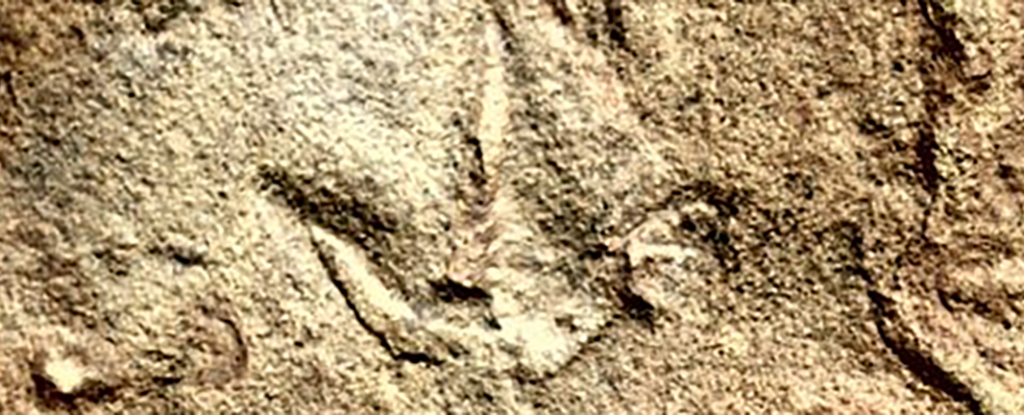Researchers have been taking a closer look at some bird-like footprint fossils in Africa, stretching back some 210 million years.
These footprints are something of a mystery: fossils for even the earliest bird ancestors don’t show up for another 60 million years.
These footprints have been known about for many years, but here a team from the University of Cape Town in South Africa wanted to do a more comprehensive analysis on the fossils, which are actually taken from four separate sites in the region.
Looking in particular at the records found at the Maphutseng site, an 80-meter (262-foot) stretch of tracks, the researchers were able to identify two separate kinds (or morphotypes) of footprint, under the Trisauropodiscus category – that’s the name previously assigned to these bird-like, three-toed footprints.
“Our findings suggest that there are two distinct Trisauropodiscus morphotypes, one of which resembles footprints made by birds,” write geologists Miengah Abrahams and Emese Bordy in their paper.
The first morphotype showed larger, longer feet, the researchers say, with toes that are closer together. These footprints are not dissimilar to another fossilized footprint type, Anomoepus, which researchers think was left by a specific type of dinosaur.
As for the second type, these footprints were around half the size on average, and wider than they were taller, with toes that were more slender. This morphotype is more of a mystery – but it’s a closer match for modern day birds.
The researchers think that footprints falling into the second morphotype category were left by the earliest ancestors of birds. In other words, dinosaurs may have started showing some bird-like traits much earlier than the fossil record suggests.
“That these tracks of southern Africa, dating to the Late Triassic, so strongly resemble Cenozoic and modern bird tracks substantiates the converging pedal morphology of Late Mesozoic archosaurs and firmly shows that the origin of bird-like foot morphology is at least ~210 million years old,” write the researchers.
The mystery of which ancient beast actually left these tracks remains to be solved, but the researchers think that it would’ve been some kind of three-toed archosaur – a branch of the evolutionary tree that has left us with both birds and crocodiles today.
While the hunt for a fossil that can tell us more about the animal responsible for these footprints goes on, the research offers a fascinating peek back hundreds of millions of years – and how birds have evolved since then.
“Fossil tracks can be used to infer ancient diversity, ethology, and evolutionary trends,” write Abrahams and Bordy.
“This is particularly useful for deep-time intervals during which the early history of an animal group is reliant upon limited fossil skeletal material.”
The research has been published in PLOS ONE.





